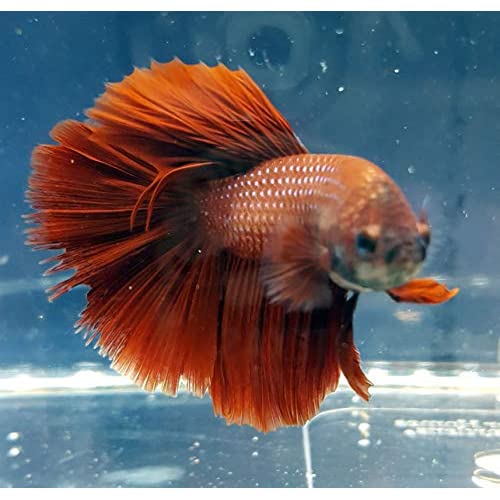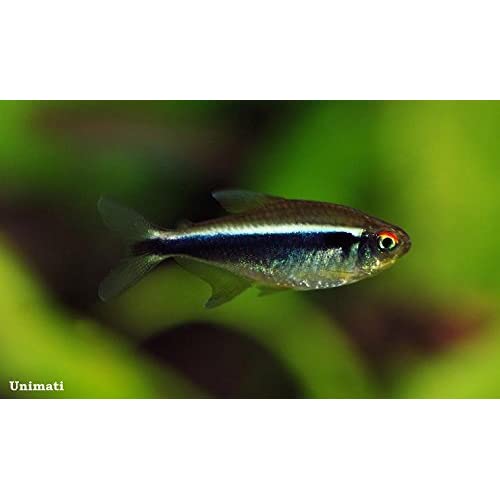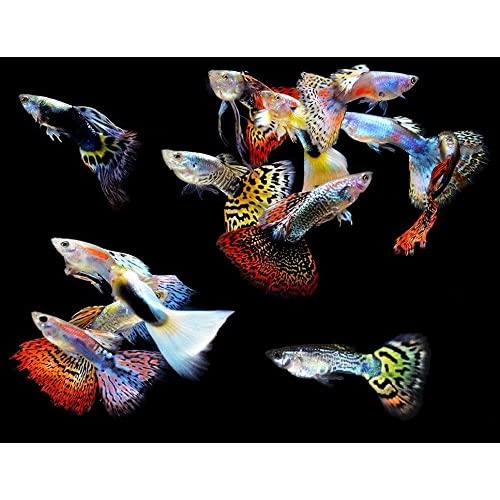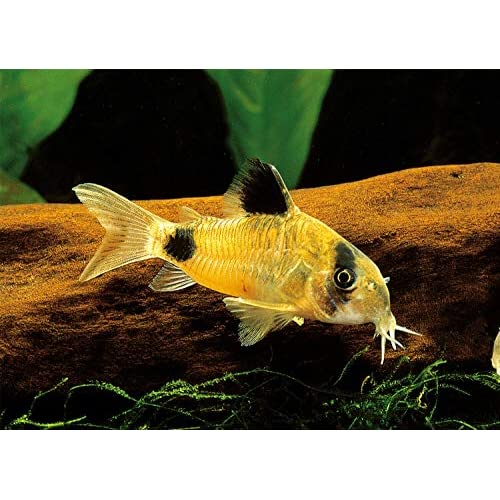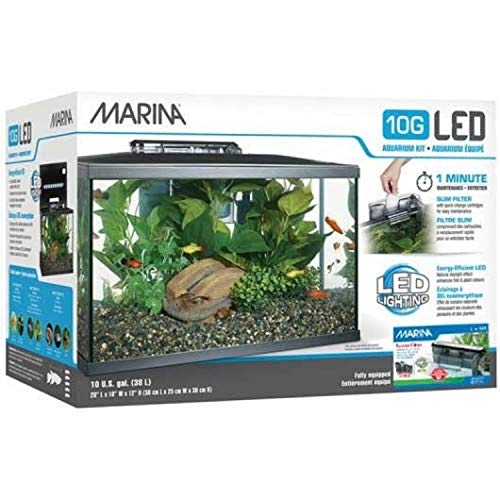A 10 gallon aquarium is a popular choice for owners who do not have much free space or do not want to disperse too much care for too many fish in the tank. With this size, you can only raise a small number of fish to ensure their healthiest and safest habitat.
But which fish is best suited for this small living space? This is a question that many people really want to find the answer for themselves. Not all fish are suitable for a 10 gallon tank so you need to research to choose the most suitable fish.
We have prepared a list of the best fish for a 10 gallon tank. These fish are ideally suited to living in a modest 10 gallon space.
The 7 Best Fish For A 10 Gallon Tank 2021
#1 Betta Fish
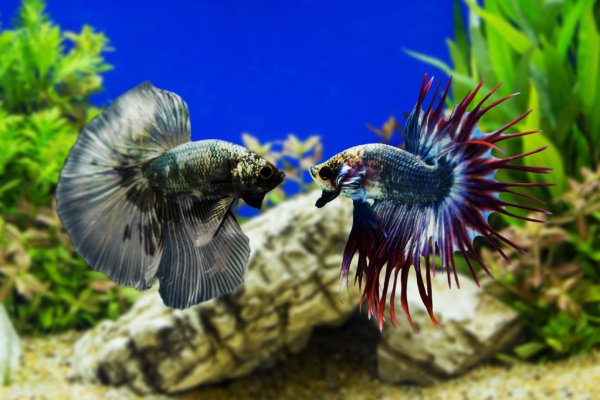
A 10 gallon tank is often referred to by many as another betta tank. So when it comes to which fish is best suited for a 10 gallon tank, we can’t ignore this fish.
Betta is a popular freshwater fish with and is famous for its attractive appearance. They have very striking colors accompanied by wide fins like skirts.
Betta fish are a carnivorous fish, so they mainly eat plankton or larvae. When provided with food and a clean environment, this fish can survive and grow very quickly, they can heal their wounds or tear their fins quickly.
In addition, the owner can also choose worm food or foods made from minced meat, pickled shrimp, red worms mixed with vitamins to feed Betta fish. In particular do not give them food made from plants such as cereals, which will make them choke, poison and lead to fish death.
Bettas can tolerate cramped habitats and do not need to be aerated because they have an extra respiratory organ. The male is very aggressive and needs to be kept alone.
Although many stores usually keep the male in a small glass jar, you should choose a tank with a minimum volume of water of 5 gallons for a stable culture environment. The tank should have a lid, still water, low light and a few plants.
Bettas are easy to reproduce, lay eggs in a foam nest. The male takes care of the nest and the fry, but you need to keep the mother separate to avoid her eating the eggs. After 3-4 days, the eggs will be fully hatched.
However, taking care of Betta fish is quite difficult because they are susceptible to infection, so it is important to look into them before raising this expensive fish.
If well cared for, they can survive up to 20 years while the average life span of this fish is 5-7 years.
#2 Tetra Fish
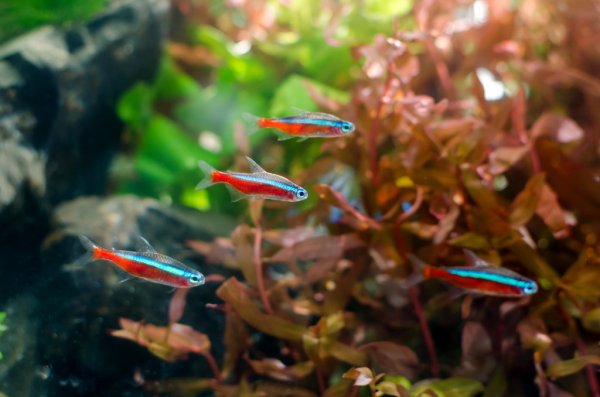
Tetra fish have a beautiful and attractive appearance, quite easy to raise, so it is suitable for beginners who have no experience in raising and caring much.
Tetra fish have an average size of 2.5 cm. Their outstanding feature is carrying many different colors. It can be a mix of purple, green or yellow, this blend gives a really striking appearance for Tetra fish.
Some are native to the tropical regions of South America while others are accustomed to the humid climate in East Africa with seasonal heavy rains and living in large rivers.
However, no matter where they live and from where they originate, they can thrive in a tank together.
Tetra fish grow best in water temperatures around 23 -26 ° C. When the water temperature is lower, it will significantly reduce the activity of the fish and slow down their metabolism.
Besides, you should pay attention to the quality and pH of the aquarium water. This fish requires a pH of 6.0-7.0. While Tetra fish rarely suffer from specific diseases, they are very sensitive to changes in temperature as well as pH, so you will have to keep this in mind.
Because this fish loves to swim, you need to install a good water filter for your tank to create the most suitable water flow. You should also put many aquatic plants in the tank of Tetra fish to create the most ideal habitat for them.
#3 Guppy
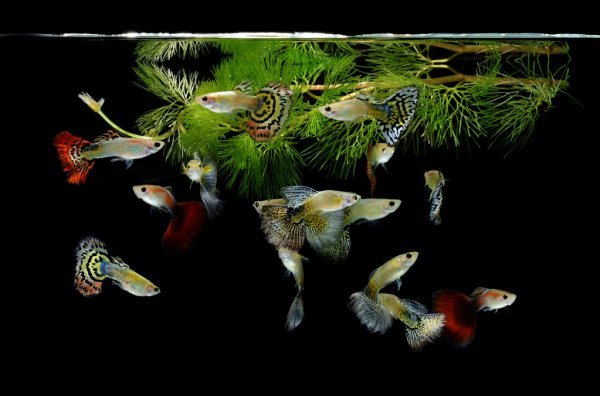
Gupphy is considered a beautiful, easy to raise and one of the most popular aquarium fish in the world. They have completely unique colors and patterns, without any fish having identical patterns and colors.
This fish has a size difference between males and females. Guppy males are smaller than females, an adult male is approximately 3cm – 3.5cm. Meanwhile, the adult Guppy is about 4cm – 6cm.
Guppy often lived in crowded herds. The food in the wild is mainly moss and small creatures. Guppy females have a fairly short spawning cycle, so the number of members in the herd increases rapidly.
Guppy is easy to raise, but it also has certain environmental requirements. This fish grows steadily in the temperature range of 18-28 ° C. Any change from habitat will affect their health as this species is very sensitive to any change.
This fish is capable of breeding when it reaches the age of 6 weeks – 8 weeks. Each birth is usually 7-10 days apart, each birth can range from 15 to 40 children. The number of fries depends on the size of the mother, the larger the mother, the more children will give birth.
The hallmark of a female is about to spawn as she has a very pronounced curvature, a curled tail and a large spread. It may also hide in aquatic plants. However, when the mother is finished breeding, you should keep the mother fish separately to avoid eating her eggs.
Guppy’s main food is algae. They also like water parasites, small organisms. You can use commercial food to feed them.
However, Guppy eats very little so you shouldn’t feed them too much. This will limit leftovers contaminating the water in the tank.
#4 Corydoras panda
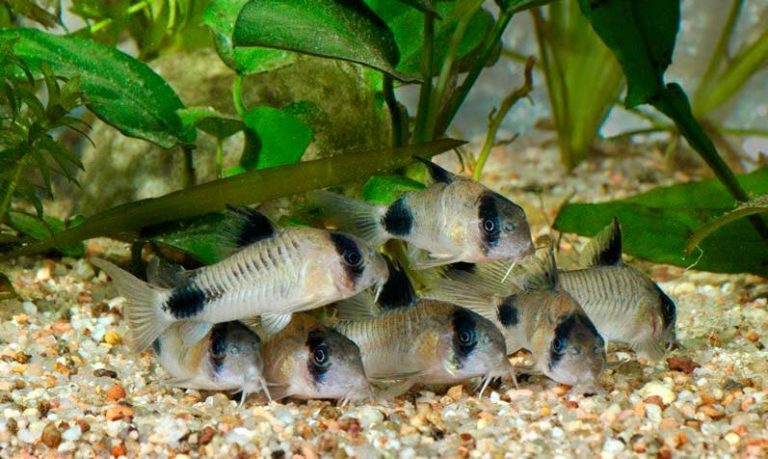
Corydoras panda in the wildlife in the tributaries of the big rivers in Central and South America, they are peaceful benthic fish with small size. Their maximum length is 6.5 cm.
Corydoras panda has a distinctive appearance with pale body color, highlighted by two black streaks on the eyes, near the tail and on the dorsal fin. Its appearance is similar to the panda and that is the origin of the name of this fish.
This is also an easy fish to keep but you still need to ensure an ideal habitat for them. The ideal temperature for this fish to grow is about 22 ° C. This temperature is slightly lower than some other tropical fish because Corydoras panda lives in cooler areas. And you also need to maintain pH 6.0-7.0
This fish loves shade, so you need to give your 10 gallon tank plenty of aquatic plants or caves. These can create a lot of shade and shelter for Corydoras panda, thereby making them feel more comfortable and reduce stress.
You should also really care about the substrate you use for this 10 gallon tank. Because Corydoras panda is a fish that lives in the bottom water, the substrate must be smooth enough to not hurt their beards.
Corydoras panda is also easy to breed fish. They lay their eggs on a substrate that is an aquatic plant or a tank. Eggs are light yellow and will hatch after 3 days underwater temperature below 22 ° C. However, you should separate the parents after spawning.
These fish are omnivorous so they can eat whatever you give them. They are peaceful fish, live in groups and the best number to keep in a 10 gallon tank is 4-6 fish. They can also live with other fish but you should not choose an aggressive companion for them.
#5 Dwarf Gourami
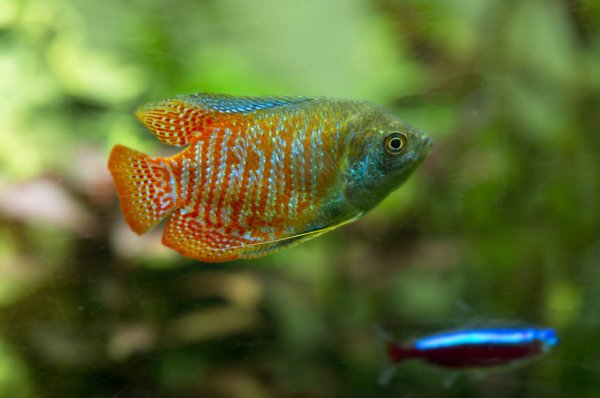
Dwarf Gourami is a freshwater fish with a unique appearance, originating from slow-flowing rivers in South Asia. They are members of the Osphronemidae family – a family of fish known for their gentle, easy-to-care ornamental fish.
The Dwarf Gourami’s average lifespan is 5 years, they can live longer if meticulously cared for. Dwarf Gourami is a very special species, they possess a lung organ that allows oxygen from the air.
This fish lives in the community. They feel more comfortable and safer when swimming in a herd. Most of the time you will see them swimming in the middle or top floor of the tank. When swimming in groups, they often move very slowly and often hide around decorative details.
Dwarf Gourami prefers slow flow with a small amplitude, accompanied by dense aquatic plants. They are accustomed to strong lighting conditions, temperatures and diets in small or even cramped pools.
It is important that the grouper is familiar with the change in temperature. Because the water suitable for living there is unusually hot and cold. Therefore, they have to adapt.
The ideal water temperature for this fish is around 25-26 ° C. PH 6.0 – 8.0 is the most suitable level for Dwarf Gourami’s habitat.
They are not picky eaters. You should choose a grain food with balanced nutrition and vitamins. Plant foods also add nutrients to the Dwarf Gourami diet.
During the breeding period, you should separate your parents Dwarf Gourami into a separate tank. After the nest is built, the female will start laying eggs and the male will place the eggs in the nest. You should separate the female to the main tank immediately after spawning, and separate the male when the fry begins to leave the nest.
#6 Pencilfish
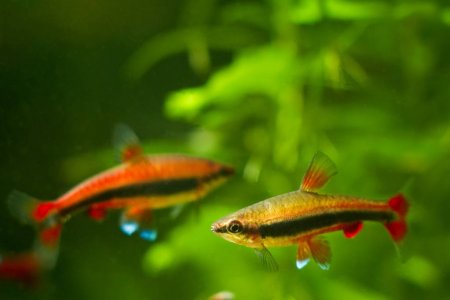
Pencilfish are mainly distributed in Amazon, Colombia, Peru and Guyanas. They live in large swampy areas when floods move into submerged tropical forests. During low water season, they are often trapped in small lakes.
The maximum size of a three-striped pencil fish is only up to 6cm. During the day, the three stripes on their body are visible, and at night they fade. This is probably one of the natural instincts to avoid predators of this fish.
Pencilfish eat omnivores and mainly swim near the water. Their main food in the wild is insects, microorganisms as well as algae. So you can feed them any commercial food or homemade foods.
This fish is also highly fertile. Fertilization takes place outside, females can lay about 30-100 eggs. Eggs will hatch in 24-72 hours depending on the temperature of the water.
They mainly lay their eggs during the day in aquatic plants. The eggs have adhesive and are usually placed on the leaves. If fed and provided with an adequate vegetative cover, parents will not eat eggs so you do not need to separate us.
Pencilfish are also community fish. You should keep 5-8 birds in a 10 gallon tank to ensure the best habitat for them.
#7 Kuhli Loaches
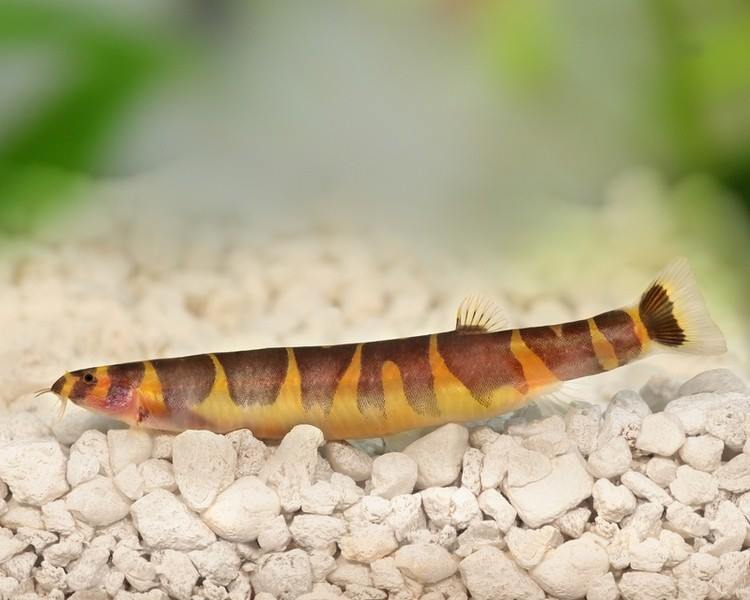
Kuhli Loaches are freshwater fishes shaped like eels of the loach family. This is a fish that many people choose for their aquarium because they have a special appearance and do not require much effort to care.
This fish originates in Southeast Asia and mainly lives in slow-flowing rivers and mountain streams. They like areas with lots of sand and calm water.
Kuhli Loaches often live in small groups swimming close to the bottom. Because of their small size and long body, they easily weave between structures on the bottom to find food.
This fish is shaped like an eel and its mouth is surrounded by four pairs of antennae. They have fairly small fins and are located quite near the tail. On its body, there are many dark-colored lines and the distance between them is quite even.
Their eyes are covered with a transparent layer of skin. They look quite special and striking.
Kuhli Loaches can breed when they reach a length of 7 cm. They often lay their eggs in shallow water.
This fish grows best in water temperatures of 24-30 ° C and pH in the range of 6.0-6.5. It also requires adequate oxygen supply and a soft substrate, preferably sand.
They like to eat fresh food such as bloodworms, larvae, filaments and plankton. It can also eat a variety of other foods like frozen, dried, pellet and flake foods.
You should feed them small food that can sink to the bottom and should be fed in the evening because this is a fish that is active at night. If well cared for, they can survive for up to 10 years.
The Best 10 Gallon Fish Tank
For many people, a 10 gallon tank is not the first choice because it requires you to clean a lot. The small size means it is more polluted than bigger tanks. So many people can’t take the time to clean up a 10 gallon tank regularly.
However, it is a top priority for those who do not have much storage space. The 10 gallon tank is the best size for them to have outstanding aquarium fish.
With smaller sizes, it is difficult to raise a significant number of fish. And small spaces will also be difficult to install other assistive devices.
Now that there are 10 gallon tanks on the market, you may be overwhelmed by these options. According to our objective review, Marina LED Aquarium Kit is the best 10 gallon tank. You can buy it on Amazon or at any aquarium supply near you.
